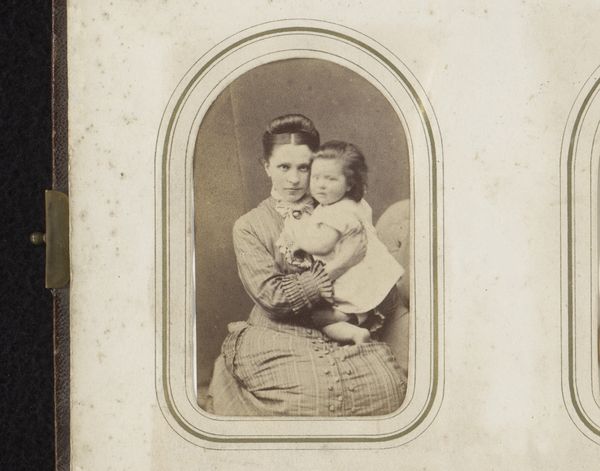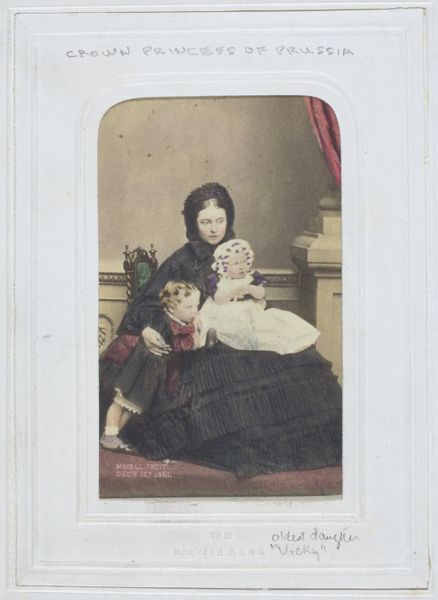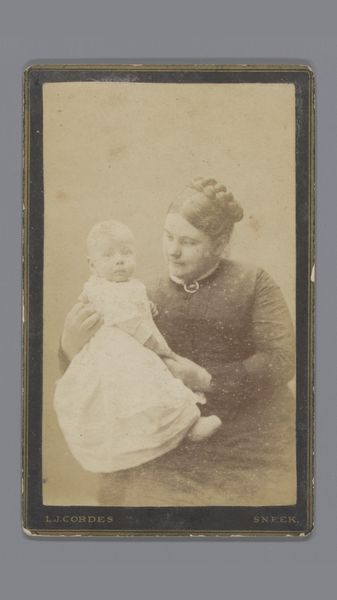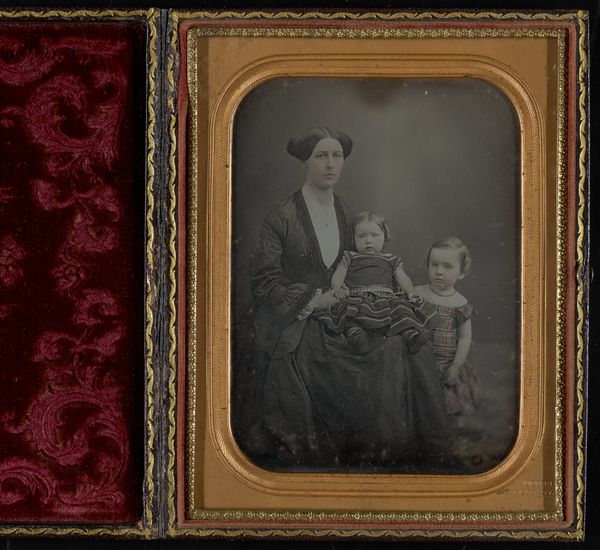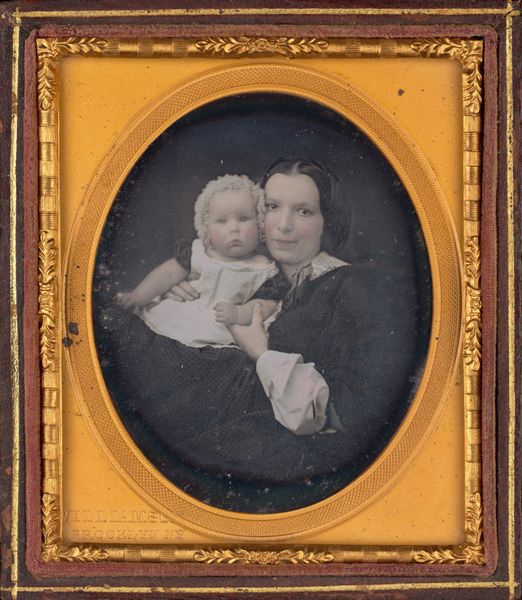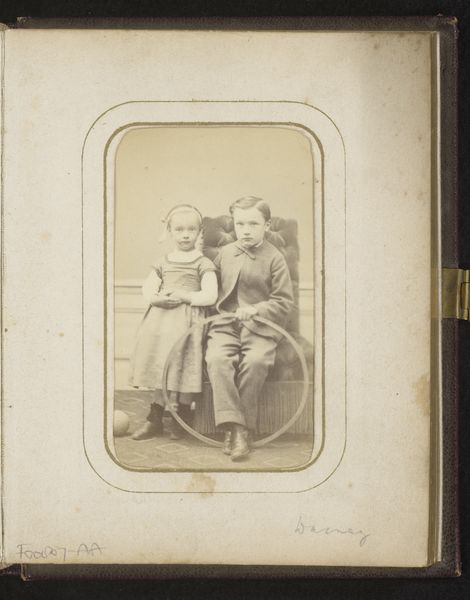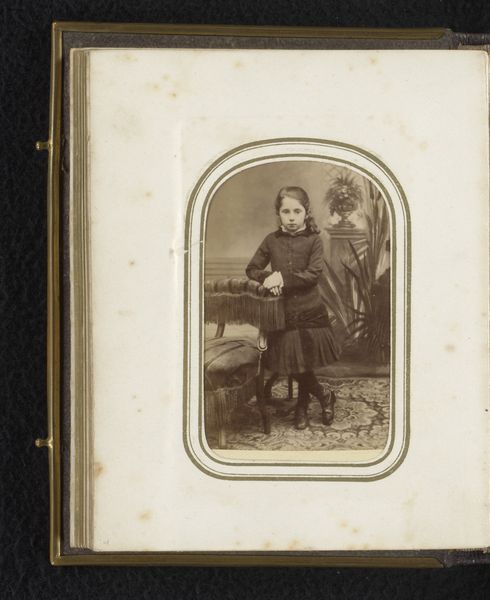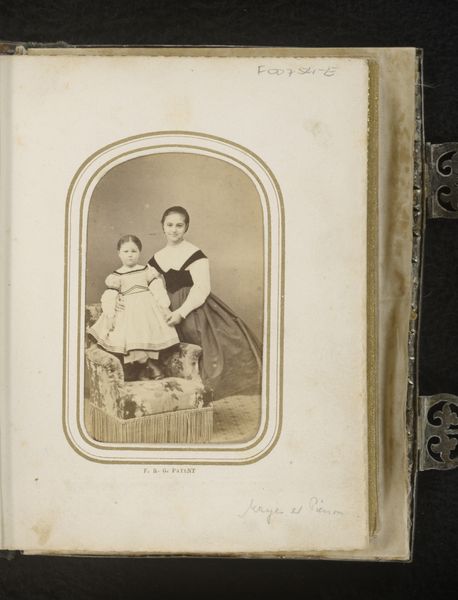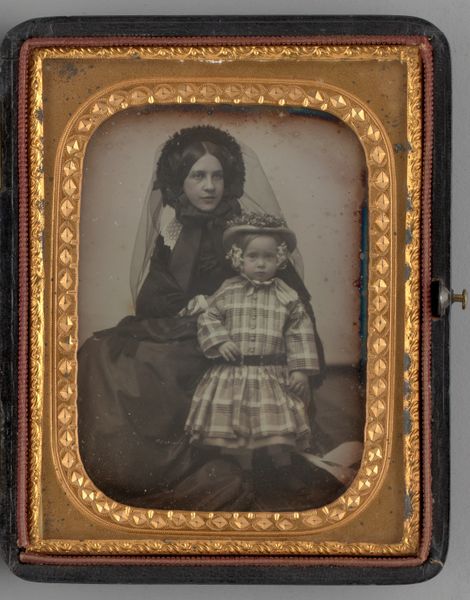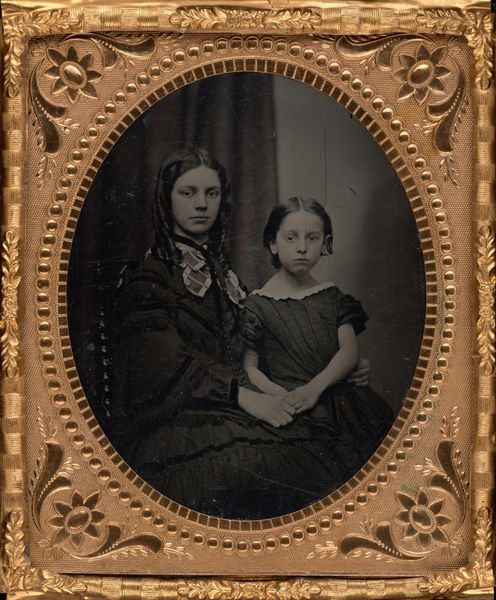
daguerreotype, photography, albumen-print
#
portrait
#
16_19th-century
#
self-portrait
#
sculpture
#
daguerreotype
#
photography
#
united-states
#
decorative art
#
albumen-print
Dimensions: 10.8 × 8.3 cm (plate); 12 × 10.7 × 1.6 cm (case)
Copyright: Public Domain
Curator: Here we have an untitled daguerreotype, attributed to E. Jacobs, and dated between 1844 and 1864. Editor: It's so tiny, almost jewel-like. There's a melancholic mood, though. Look at that child's wary expression! Curator: The process of daguerreotypes made portraiture much more accessible to the middle classes. The democratisation of images... family portraits, like this, became cherished objects, expressions of identity and status. Editor: Yes, but consider the actual labour involved. The preparation of the plate, the precision... and the sitter would have had to stay still for what felt like an age in those early days of photography. That discipline informs the feel of the photograph. Curator: Absolutely, and this image speaks to broader issues of representation in early photography. Consider who gets to be seen, who controls the narrative. Did families commission images that served certain narratives about themselves? Editor: Definitely. This reminds me of thinking about dressmaking, you know. The fabrics and cut are essential in telling the family's story, not to mention the incredible needlework in the child's frilly trim. This all took hours to craft. It makes me wonder what kind of social networks sustained these skills? Curator: Good point. Then too, look at the sitter's controlled composure... so typical of nineteenth century portraits, reflecting ideas about family decorum and what was meant to be made public. The control, performance of gender and class expectations all intersect here. Editor: Precisely. What we’re left with is not just an image but a physical record of labor, material choices and a particular moment of display, however controlled. That tension is incredibly moving to consider. Curator: Absolutely, the daguerreotype encapsulates a pivotal moment of transition and the growing cultural impact of image making on social life. Editor: Right. Now, when you see something like this you can reflect not just on who is captured, but also on the labor of its creation.
Comments
No comments
Be the first to comment and join the conversation on the ultimate creative platform.

